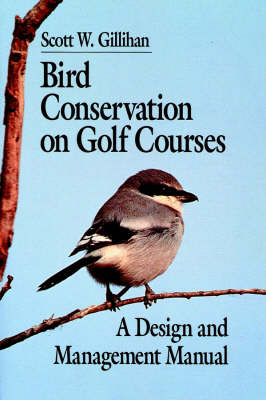
Bird Conservation on Golf Courses
John Wiley & Sons Inc (Verlag)
978-1-57504-113-1 (ISBN)
- Titel ist leider vergriffen;
keine Neuauflage - Artikel merken
"Golf courses are habitat for birds.
"Golf courses and course design ate for more than golfers; good courses attract birds for the enjoyment of all. Scott Gillihan shows how to effectively create and manage courses that contribute to bird conservation."––Richard M. DeGraaf, Chief Research Wildlife Biologists, USDA Forest Service
"Golf courses are habitat for birds. Scott Gillihan does a superb job describing the bird management possibilities for managers of golf courses and other habitats. May the day come when golfers in conference at the 19th hole talk about two kinds of birdies that added to the day′s enjoyment."––Jack Ward Thomas, Boone and Crockett Professor of Wildlife Conservation, University of Montana
"The book will be an important reference for golf course management professionals who wish to be good stewards of birds and other wildlife on their property. The conservation philosophy and guidance that you offer should allow conscientious superintendents to establish a sound approach to bird conservation on their courses."––Thomas M. Franklin, Wildlife Policy Directory, The Wildlife Society
Soctt W. Gillihan, Forested Ecosystem Program Coordinator for the Colorado Bird Observatory, received his B.S. in wildlife biology from Colorado State University and his M.A. in zoology from the University of Montana. His very first job was as a caddie at a country club; later positions included horticulture and landscape construction and maintenance. Scott has been a wildlife technician and biologist for state and federal natural resource agencies since 1983, working on research and management projects directed primarily at birds, but also at small mammals, fish, and amphibians. His work at the observatory has included analyzing the effects of forest management practices on bird populations, studying habitat use by bald eagles nesting at the edge of an urban area, and writing management guidelines for the conservation of forest and grassland birds. His current research interests include winter ecology of birds and small mammals, landscape–level natural disturbances and their effects on forest bird communities, and bird conservation in forest areas.
Chapter One. Why Should Golf Courses Benefit Birds?
Why birds?
Birds need help.
Golf can be good for birds.
Birds can be good for golf.
Which birds?
Chapter Two. Basic Principles of Bird Biology.
The types of birds.
Habitat needs of birds.
Chapter Three. Conservation Efforts at Large Scales.
Patches.
Edges.
Corridors.
Nature preserve design concepts.
Which habitat patches and corridors?
Creating habitat patches.
Adjacent land use.
Buffer zones.
Golf courses in the landscape.
Incorporate nature.
Chapter Four. Conservation Efforts at Small Scales.
Structural diversity.
Planting with natives.
Snags.
Nest structures.
Feeders.
Baths.
Brush pile.
Water features.
Additional ideas.
Chapter Five. Course Maintenance.
Pesticide use.
Managing habitat patches.
other maintenance issues.
Chapter six. Problems with birds.
Waterfowl.
Nest defenders.
Woodpeckers.
Perching flocks.
Collisions with windows.
Chapter Seven. Highlight Birds.
Loggerhead shrike.
Purple Martin.
Bluebirds.
Hummingbirds
Shorebirds.
Chapter Eight. Other Golf Course Residents.
Bats.
Butterflies.
Glossary.
References.
Appendix One: Sources of Additional Information.
Appendix Two: Plants for Birds.
Appendix Three: Artificial Nest Structures.
Appendix Four: Breeding Bird Lists.
Appendix Five: Habitat Requirements of Breeding Birds.
| Erscheint lt. Verlag | 15.11.1999 |
|---|---|
| Verlagsort | New York |
| Sprache | englisch |
| Maße | 153 x 226 mm |
| Gewicht | 564 g |
| Themenwelt | Sachbuch/Ratgeber ► Sport ► Golf |
| Naturwissenschaften ► Biologie ► Ökologie / Naturschutz | |
| Naturwissenschaften ► Biologie ► Zoologie | |
| ISBN-10 | 1-57504-113-8 / 1575041138 |
| ISBN-13 | 978-1-57504-113-1 / 9781575041131 |
| Zustand | Neuware |
| Haben Sie eine Frage zum Produkt? |
aus dem Bereich


